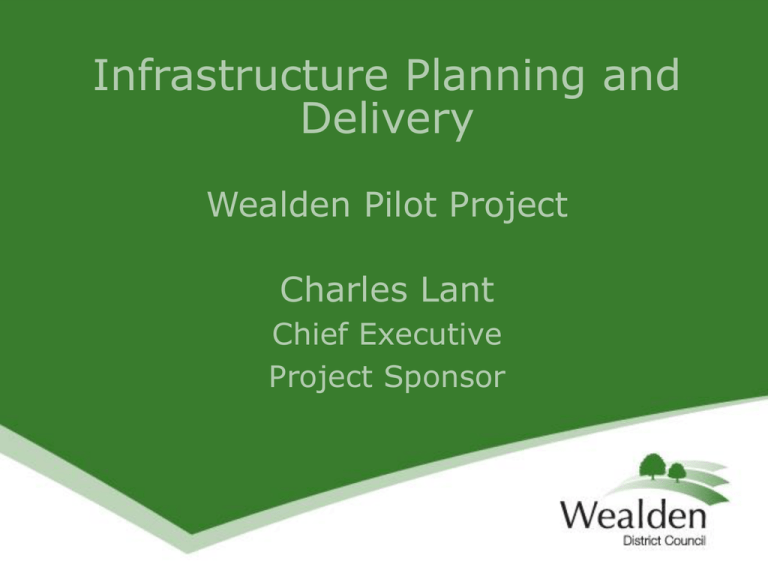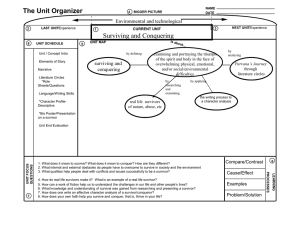Infrastructure Planning and Delivery
advertisement

Infrastructure Planning and Delivery Wealden Pilot Project Charles Lant Chief Executive Project Sponsor Infrastructure Planning and Delivery: Key Points The Infrastructure Delivery Plan (IDP) • Why – Critical for LDFs • Opportunity of assistance from Planning Advisory Service • Pilot with three other local authorities Infrastructure planning and delivery “The core strategy should be supported by evidence of what physical, social and green infrastructure is needed to enable the amount of development proposed for the area, taking account of its type and distribution. This evidence should cover who will provide the infrastructure and when it will be provided. The core strategy should draw on and in parallel influence any strategies and investment plans of the local authority and other organisations” Planning Policy Statement 12 What does it include? • Physical, social and green infrastructure • Public sector investment by all agencies • Private sector investment including developers contributions and CIL • Voluntary and community investment • Facilities for existing and future population For the first five years… • “for at least the first 5 years of the plan it should be clear what infrastructure is required, who is going to fund and provide it and how it is to relate to the rate of development” The Planning Inspectorate (2009). Examining Development Plan Documents: Learning from Experience … and after that • The amount of detail that it is possible to supply with regard to infrastructure planning is likely to be less certain and comprehensive for the later stages of the plan period” The Planning Inspectorate (2009). Examining Development Plan Documents: Learning from Experience Commitment from partners • In a number of instances submitted plans did not make it clear whether key partners were signed up for such infrastructure provision. Before the plan can be found sound such a deficiency would need to be adequately addressed” The Planning Inspectorate (2009). Examining Development Plan Documents: Learning from Experience What’s vital? • “Critical dependencies need to be identified and it may be that the council needs to consider breaking down infrastructure requirements into essential and desirable categories” The Planning Inspectorate (2009). Examining Development Plan Documents: Learning from Experience What if? • “Where an element of infrastructure is critical but it is uncertain whether it can be delivered, the plan should deal with the question of what the consequences are and what contingency arrangements may be possible – in other words the “what if” question” The Planning Inspectorate (2009). Examining Development Plan Documents: Learning from Experience Viability again • “if the intention is that the development itself will fund the infrastructure, viability evidence will be needed to show that such an approach is realistic and capable of delivering the infrastructure at an appropriate time” The Planning Inspectorate (2009). Examining Development Plan Documents: Learning from Experience Documentation • “The detail regarding planned infrastructure can be set out in supporting evidence such as an Infrastructure Delivery Programme which can be updated regularly” The Planning Inspectorate (2009). Examining Development Plan Documents: Learning from Experience PAS guidance – seven steps 1. 2. 3. 4. 5. 6. 7. vision and policy context governance evidence gathering standards and deficits infrastructure delivery plan validation delivery PAS guidance • IDP should be a corporate activity • Engage with: – Local Strategic Partnership (LSP) and – Planning (LDF process) Next steps Afternoon session • 3 groups: looking at physical, social, green infrastructure • learn more about each category • give views on the issues and their relative importance • move to another group after 30 minutes • assist in forming an emerging view of the needs and issues











